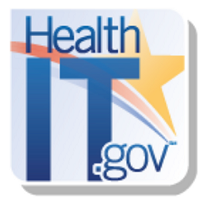 By Lana Moriarty/ Director, Office of Consumer eHealth, Office of Programs and Engagement, ONC , and
By Lana Moriarty/ Director, Office of Consumer eHealth, Office of Programs and Engagement, ONC , and
Linda Harris/ Director, Division of Health Communication and eHealth, ODPHP
Twitter: @ONC_HealthIT
The ONC Patient Engagement (PE) Playbook was created by the Office of the National Coordinator for Health Information Technology (ONC) to help healthcare professionals use health information technology (health IT) to provide better care to patients. The PE Playbook focuses specifically on electronic health record (EHR) patient portals, which allow both patients and healthcare teams, concurrent with patients’ privacy preferences, to easily access patient health information — which may lead to increased benefits for healthcare, such as improved health outcomes and lower costs.
Research also shows that adding credible educational resources to patient portals can help improve their usability and effectiveness — and help boost patient engagement. That’s why ONC partnered with the Office of Disease Prevention and Health Promotion (ODPHP) to show providers and care teams how to easily add these resources to enhance the patient experience – such as those from healthfinder.gov, ODPHP’s go-to consumer site for evidence-based prevention and wellness information.
This month, ONC added myhealthfinder to the PE playbook; myhealthfinder is a tool that provides users with personalized recommendations for preventive services based on age, sex, and pregnancy status. The goal is to encourage healthcare professionals to integrate myhealthfinder into their patient portals by highlighting myhealthfinder’s ability to improve the patient-provider relationship and overall patient experience. So how can adding this tool to patient portals help healthcare professionals improve the patient experience?
Improving the patient-provider relationship
One of the most important parts of the patient-provider relationship is trust. Giving patients access to credible, reliable and easy to use resources can help healthcare professionals demonstrate respect, fostering trust with patients. myhealthfinder is designed, based upon health literacy and usability principles, to personalize evidence-based prevention recommendations and be user friendly. As a result patients are more informed and engaged in productive conversations about their health and care. Patients who play an active role in their healthcare are more likely to use preventive services and engage in shared decision making with their provider, important components of a trusting patient-provider relationship.
Saving valuable time during wellness visits
When it’s time for a patient’s annual wellness visit, or other primary care visits, healthcare professionals can send an e-alert through the patient portal prompting the patient to schedule an appointment. The e-alert could include a link to the myhealthfinder tool in the patient portal, with a “prescription” for the patient to complete the tool and bring the results to the visit. This can mean more time-efficient visits, because the patient is prepared to make shared decisions about preventive services.
Flexible health IT without the hassle
One of the great things about adding myhealthfinder to a patient portal is that there’s very little burden on healthcare professionals; myhealthfinder is maintained and updated by the healthfinder.gov team, so content updates automatically when necessary — saving busy professionals time and resources. It can also be integrated into any patient portal as a web badge, a widget, or by using our application program interface (API).
Advancing healthcare with health IT
The union of myhealthfinder and the PE Playbook is just one more indication that the future of health IT is bright — and exciting! In the future, the portal will evolve and further empower patients in even more ways, such as being able to request their medical records electronically via the patient portal, and send/share this information with other providers. The more tools we have to help engage patients in their healthcare, the more we empower them to improve their health and well-being.
This post was originally published on the Health IT Buzz and is syndicated here with permission.
